This article was co-authored by Miguel Cunha, DPM. Dr. Miguel Cunha is the founder of Gotham Footcare and is a podiatrist based in Manhattan, New York. Dr. Cunha is a foot and ankle surgeon with experience treating a wide array of foot and ankle conditions from minor problems to complex reconstructive foot and ankle surgery. Dr. Cunha received his DPM from the Temple University School of Podiatric Medicine and completed his residency as the Chief Resident at the Washington Hospital Center and Georgetown University where he specialized in lower extremity trauma, diabetic limb salvage, and reconstructive surgery of the foot and ankle. Dr. Cunha is a member of the American Podiatric Medical Association, the New York Podiatric Medical Association, the American College of Foot and Ankle Surgeons, and is board certified in Podiatric Medicine.
This article has been viewed 227,064 times.
The name "Morton's Toe" derives from American Orthopedic Surgeon, Dudley Joy Morton. It is a common problem in the foot. People with this problem often have a second metatarsal (foot bone) that is longer than the first. The difference in length between the 1st and 2nd foot bones can cause changes in the way you walk and your balance. This condition can also cause long term pain in the foot. There are ways to treat the symptoms of Morton's toe as well as correct the condition.[1]
Steps
Recognizing the Signs and Symptoms of Morton's Toe
-
1Look at your foot. If you have Morton's Toe, your second toe will likely be longer than your big toe.
- A normal foot shape is defined by a big toe that is longer than the rest, with toes 2-5 decreasing in length.
- You might have Morton's toe even if your second toe isn't longer than your big toe.
- You should always see a medical professional to diagnose this condition and to discuss treatment options.
-
2Understand the symptoms of Morton's Toe. Morton's Toe can cause debilitating pain and long term complications.[2]
- Morton's toe causes surrounding bones to be displaced, putting unnecessary weight on the head of the second foot bone.
- This extra weight bearing causes stress to the bone, which causes a callus to form underneath the bone. A callus is a hard swelling of bone. This callus can cause moderate to severe pain in the foot.
- Some people with Morton's Toe have debilitating pain. This can be a strong, aching constant pain or a sharp pain during walking.
Advertisement -
3Know the long term complications of Morton's Toe. This condition can lead to further problems down the road.
- Patients with Morton's Toe can have lower back pain, knee pain, and hip pain. This is due to slight changes in the way you walk when you have Morton's Toe.
- Arthritis is a common problem in people with this condition.
- This condition can also lead to bunions and hammer toes.
Treating Morton's Toe
-
1Try over the counter pain relievers. These may initially reduce pain and provide temporary relief.
- These are not a long term solution to this problem.
- Over the counter pain relievers such as ibuprofen, naproxen, acetaminophen, and aspirin can help to reduce pain and inflammation.
- Other simple interventions can include keeping weight off of your foot and applying ice to reduce inflammation.
- These should not be used long-term. If you are experiencing severe, chronic pain you should see a doctor.
-
2Roll a frozen water bottle under your foot to relieve pain. Take a cold or frozen water bottle and place it on the floor. Then, rest the arch of your foot on the water bottle. Gently slide your foot back and forth so the bottle rolls from the ball of your foot down to your heel.[3]
- Continue doing this for about 15-20 minutes.
-
3Consider buying new shoes. New shoes with the right shape and comfort level can help to relieve symptoms. Make sure your shoes have enough cushioning, and avoid tight shoes or high heels, which can make your symptoms worse.
- Purchase shoes with wider toe boxes. This extra room will provide some relief.
- Talk to a foot specialist about getting a custom orthotic with a neuroma pad. That will help separate the bones in your feet, helping you avoid the nerve pain caused by Morton's Toe.[4]
-
4Use toe separators when you sleep. At night, put a toe separator like Yoga Toes, Correct Toes, or Perfect toes on your foot. This will help create some space between your toes, which will alleviate some of the pressure you experience throughout the day.[5]
-
5See a podiatrist to get special orthotic inserts. This is often the only treatment needed for this conditions.[6]
- This consists of putting a flexible pad under the metatarsal and toe in your shoe.
- This pad cushions the area.
- This changes the weight bearing on the toe and increases range of motion in the foot.
-
6Ask your doctor about cortisone injections. This may help you get rid of some inflammation. Sometimes one injection will help, but in some cases you might need 2 or 3 before they work.
- Sometimes, cortisone injections won't work at all. However, you'll have to see a foot specialist to get the injections done, so they may be able to help you come up with a more personalized treatment plan.[7]
-
7Talk to a doctor about surgical options. Only do this if all other treatments haven't worked.[8]
- Surgery is invasive and there are always risks so it is best to try all other options before resulting to surgery.
- Surgery can be done to remove a small section of the bone to decrease the length of the second toe and relieve extra weight bearing.
- Bone shortening is the most common type of surgery for this condition.
- Other bones in the foot can be lengthened with silicone inserts by a surgeon.
- Bone lengthening is not as common as other surgical methods. This type of surgery is more invasive and has more risk for complications.
Expert Q&A
Did you know you can get expert answers for this article?
Unlock expert answers by supporting wikiHow
-
QuestionDoes taping the toes together help with Morton's toe?
 Miguel Cunha, DPMDr. Miguel Cunha is the founder of Gotham Footcare and is a podiatrist based in Manhattan, New York. Dr. Cunha is a foot and ankle surgeon with experience treating a wide array of foot and ankle conditions from minor problems to complex reconstructive foot and ankle surgery. Dr. Cunha received his DPM from the Temple University School of Podiatric Medicine and completed his residency as the Chief Resident at the Washington Hospital Center and Georgetown University where he specialized in lower extremity trauma, diabetic limb salvage, and reconstructive surgery of the foot and ankle. Dr. Cunha is a member of the American Podiatric Medical Association, the New York Podiatric Medical Association, the American College of Foot and Ankle Surgeons, and is board certified in Podiatric Medicine.
Miguel Cunha, DPMDr. Miguel Cunha is the founder of Gotham Footcare and is a podiatrist based in Manhattan, New York. Dr. Cunha is a foot and ankle surgeon with experience treating a wide array of foot and ankle conditions from minor problems to complex reconstructive foot and ankle surgery. Dr. Cunha received his DPM from the Temple University School of Podiatric Medicine and completed his residency as the Chief Resident at the Washington Hospital Center and Georgetown University where he specialized in lower extremity trauma, diabetic limb salvage, and reconstructive surgery of the foot and ankle. Dr. Cunha is a member of the American Podiatric Medical Association, the New York Podiatric Medical Association, the American College of Foot and Ankle Surgeons, and is board certified in Podiatric Medicine.
Board Certified Podiatrist
-
QuestionIs there anything I can do at home to ease Morton's neuroma?
 Miguel Cunha, DPMDr. Miguel Cunha is the founder of Gotham Footcare and is a podiatrist based in Manhattan, New York. Dr. Cunha is a foot and ankle surgeon with experience treating a wide array of foot and ankle conditions from minor problems to complex reconstructive foot and ankle surgery. Dr. Cunha received his DPM from the Temple University School of Podiatric Medicine and completed his residency as the Chief Resident at the Washington Hospital Center and Georgetown University where he specialized in lower extremity trauma, diabetic limb salvage, and reconstructive surgery of the foot and ankle. Dr. Cunha is a member of the American Podiatric Medical Association, the New York Podiatric Medical Association, the American College of Foot and Ankle Surgeons, and is board certified in Podiatric Medicine.
Miguel Cunha, DPMDr. Miguel Cunha is the founder of Gotham Footcare and is a podiatrist based in Manhattan, New York. Dr. Cunha is a foot and ankle surgeon with experience treating a wide array of foot and ankle conditions from minor problems to complex reconstructive foot and ankle surgery. Dr. Cunha received his DPM from the Temple University School of Podiatric Medicine and completed his residency as the Chief Resident at the Washington Hospital Center and Georgetown University where he specialized in lower extremity trauma, diabetic limb salvage, and reconstructive surgery of the foot and ankle. Dr. Cunha is a member of the American Podiatric Medical Association, the New York Podiatric Medical Association, the American College of Foot and Ankle Surgeons, and is board certified in Podiatric Medicine.
Board Certified Podiatrist Try icing your foot with a bottle of water for 15-20 minutes every evening. You can also take an anti-inflammatory like ibuprofen, or you can use a topical anti-inflammatory. In addition, try using toe separators when you sleep, which will alleviate some of the pressure you're getting throughout the day.
Try icing your foot with a bottle of water for 15-20 minutes every evening. You can also take an anti-inflammatory like ibuprofen, or you can use a topical anti-inflammatory. In addition, try using toe separators when you sleep, which will alleviate some of the pressure you're getting throughout the day.
References
- ↑ http://www.ncbi.nlm.nih.gov/pubmed/16374398
- ↑ http://www.ncbi.nlm.nih.gov/pubmed/16374398
- ↑ Miguel Cunha, DPM. Board Certified Podiatrist. Expert Interview/. 1 May 2020.
- ↑ Miguel Cunha, DPM. Board Certified Podiatrist. Expert Interview/. 1 May 2020.
- ↑ Miguel Cunha, DPM. Board Certified Podiatrist. Expert Interview/. 1 May 2020.
- ↑ http://www.ncbi.nlm.nih.gov/pubmed/16374398
- ↑ Miguel Cunha, DPM. Board Certified Podiatrist. Expert Interview/. 1 May 2020.
- ↑ http://www.ncbi.nlm.nih.gov/pubmed/16374398
About This Article
To deal with Morton’s Toe, which is a longer 2nd toe, buy shoes with a wider toe box to take the pressure off your foot. Alternatively, visit a podiatrist to get a special orthotic insert, which will cushion your foot and take the weight off of your toes. If you have short-term foot, hip, or back pain, take an over-the-counter pain reliever, like ibuprofen, naproxen, or acetaminophen. However, if nothing else works, you should visit your doctor to discuss surgical options, which can shorten your 2nd toe and relieve the pressure on your legs. For more tips, including how to recognize the signs and symptoms of Morton’s Toe, read on.
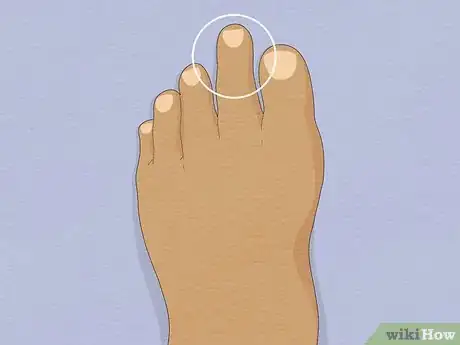
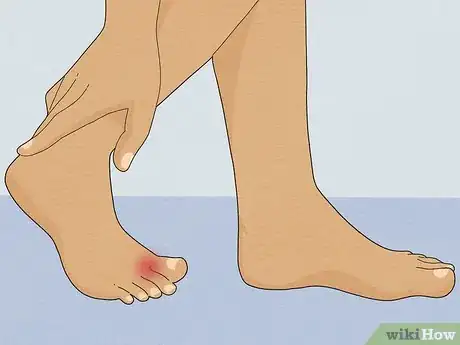
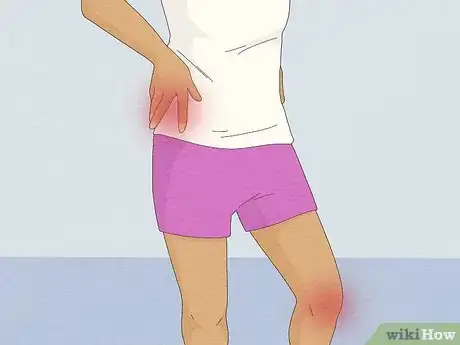
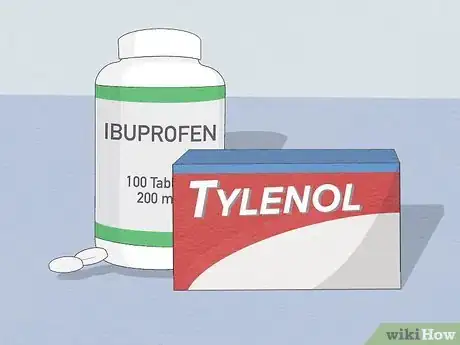
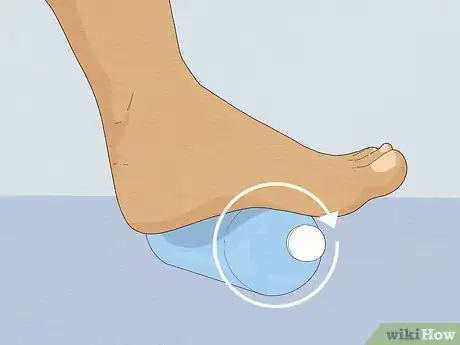

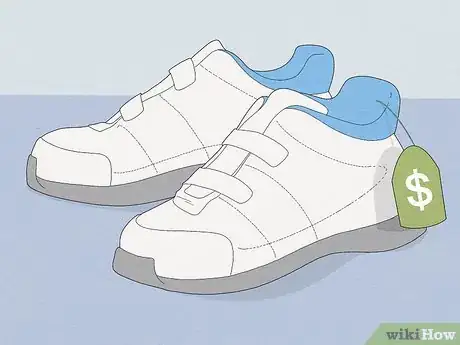
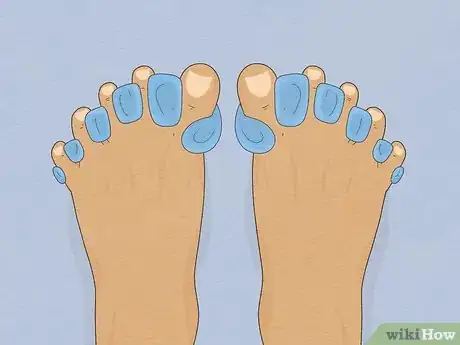
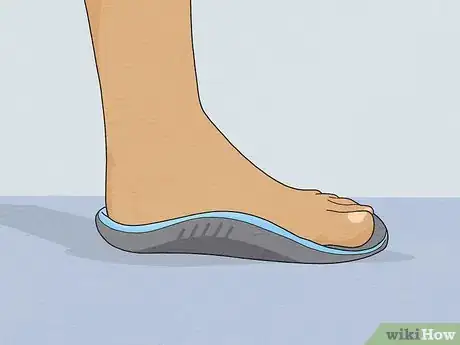
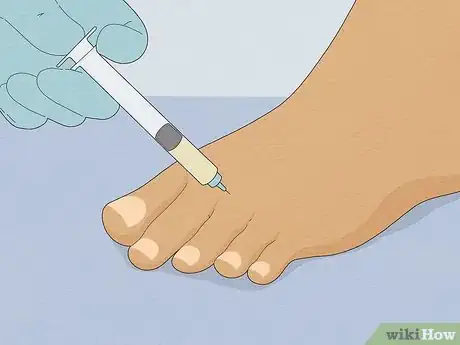
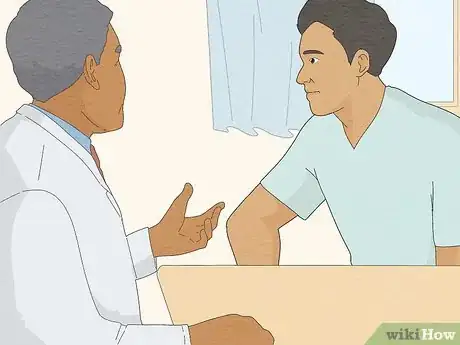
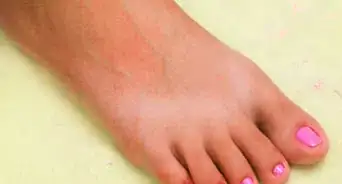
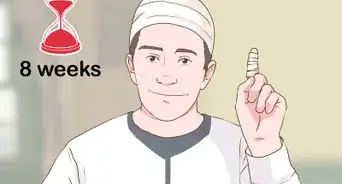
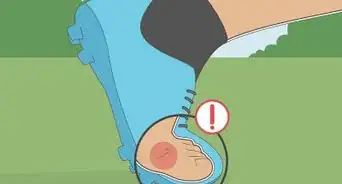
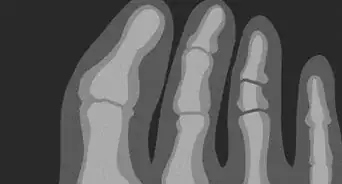
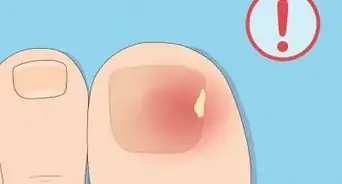

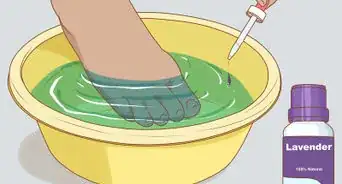

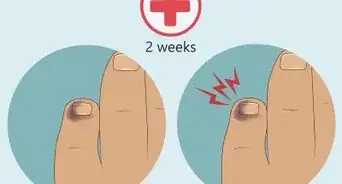
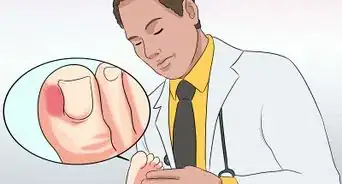
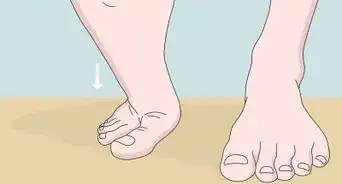
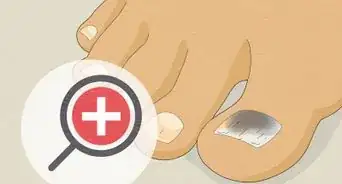
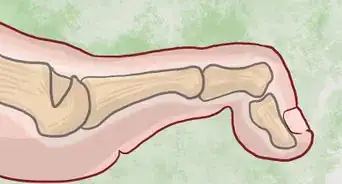







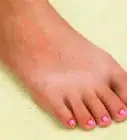
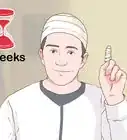
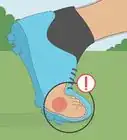
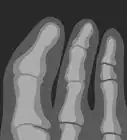



































Medical Disclaimer
The content of this article is not intended to be a substitute for professional medical advice, examination, diagnosis, or treatment. You should always contact your doctor or other qualified healthcare professional before starting, changing, or stopping any kind of health treatment.
Read More...